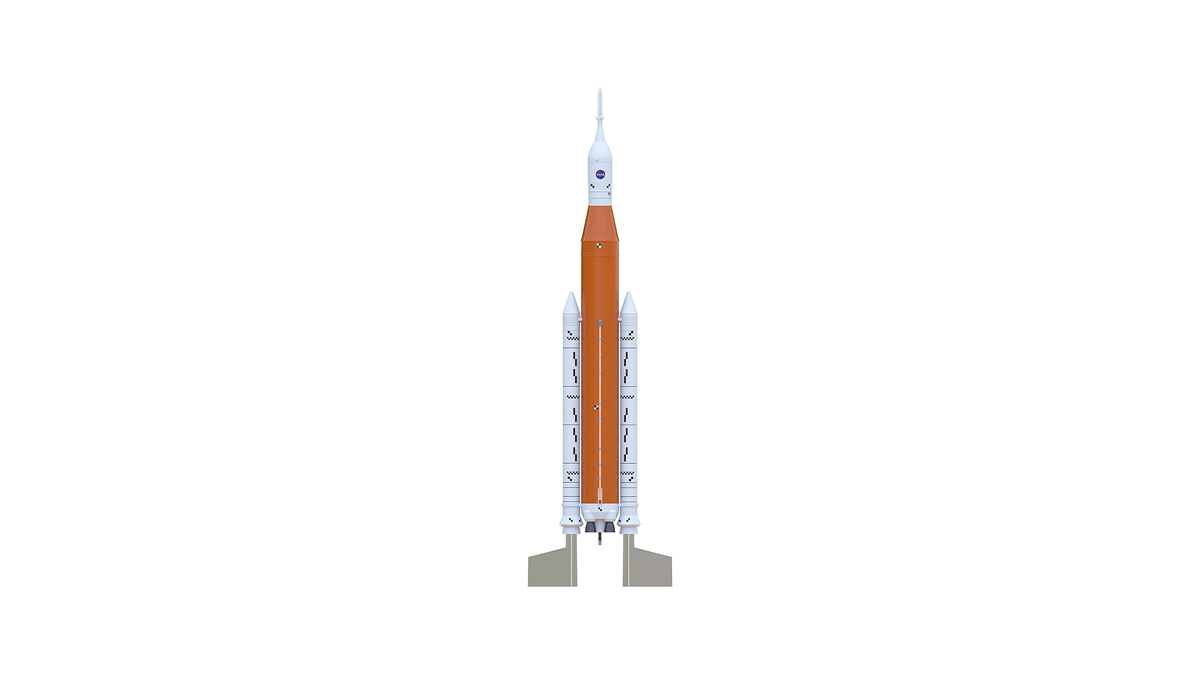NASA will update us all on its Artemis moon landing program on Dec. 5. Here's how to watch live.
NASA Administrator Bill Nelson and agency leaders will hold a press conference at 1 p.m. EST (1800 GMT).

NASA is about to speak out about its plan to return astronauts to the moon, and you'll be able to watch it live on Thursday (Dec. 5).
Top space agency officials will hold a press conference Thursday to give a public update on the state of NASA's Artemis program, which aims to launch Artemis 2 astronauts around the moon next year and land an Artemis 3 crew near the lunar south pole in 2026. The briefing will begin at 1 p.m. EST (1800 GMT) and stream live on the NASA+ streaming service and in the window above.
The Artemis update comes at a time of transition for the U.S. government, as well as NASA, after President-elect Donald Trump won the 2024 election last month. On Wednesday (Dec. 5), Trump picked American billionaire entrepreneur Jared Isaacman as his choice for NASA's next chief. Isaacman is a pilot and private astronaut who launched to orbit twice with SpaceX on missions he financed himself. Isaacman most recently flew on September's Polaris Dawn mission, in which he performed the world's first private spacewalk, and has booked two more SpaceX flights under his Polaris program.

You can launch a Space Launch System of your own with this Estes NASA SLS model rocket for a 1:200 scale version of NASA's moon megarocket. Read more about it.
Thursday's Artemis program update is not expected to touch on Trump's selection of Isaacman as his next NASA administrator. Rather, the briefing will likely provide an update on NASA's first crewed Artemis mission, Artemis 2, which is currently scheduled to launch four astronauts around the moon in September 2025. The mission, which was originally targeted for a November 2024 launch, has been repeatedly delayed since an uncrewed Artemis 1 test flight around the moon in 2022 as NASA studies heat shield issues with the Orion spacecraft.
NASA's current leader, Administrator Bill Nelson (a former Florida Senator who once flew on a space shuttle mission), will lead Thursday's Artemis program update. Joining him will be NASA Deputy Adminstrator Pam Melroy, an astronaut and space shuttle commander, as well as Artemis 2 mission commander and astronaut Reid Wisman.
Two other NASA officials — Catherine Koerner, associate administrator for exploration systems, and Amit Kshatriya, deputy associate administrator of the agency's Moon to Mars program office — will also speak during the briefing.

"Through the Artemis campaign, the agency will establish a long-term presence at the moon for scientific exploration with our commercial and international partners, learn how to live and work away from home, and prepare for future human exploration of Mars," NASA said in a statement on Wednesday. "NASA’s SLS (Space Launch System) rocket, exploration ground systems, and Orion spacecraft, along with the human landing systems, next-generation spacesuits, Gateway lunar space station, and future rovers are NASA’s foundation for deep space exploration."
Get the Space.com Newsletter
Breaking space news, the latest updates on rocket launches, skywatching events and more!
The Artemis program has come under scrutiny by the agency's inspector general and other officials due to its repeated delays and cost overruns. A report in May 2023 released by the NASA Inspector General found that the program would cost an estimated $13.1 billion over 25 years, about $6 billion more than planned.
The U.S. Goverment Accountability Office, meanwhile, released its own report in September 2023, which stated that "the SLS program is unaffordable" under its current design. And earlier this year, a NASA Inspector General report found that Boeing, NASA's prime contractor on the SLS rocket, needed to improve its quality-control work on the new moon rocket "largely due to the lack of a sufficient number of trained and experienced aerospace workers at Boeing."
That recent report centered on Boeing's work on a new version of the SLS rocket, called the SLS Block 1B, which features an Exploration Upper Stage designed to carry more cargo to the moon than the SLS rockets used for Artemis 1, Artemis 2 and Artemis 3. The Block 1B variant of the SLS was scheduled to make its first flight in 2028 on the Artemis 4 mission.
"We project SLS Block 1B costs will reach approximately $5.7 billion before the system is scheduled to launch in 2028," the OIG report stated. "This is $700 million more than NASA's 2023 Agency Baseline Commitment, which established a cost and schedule baseline at nearly $5 billion."
Join our Space Forums to keep talking space on the latest missions, night sky and more! And if you have a news tip, correction or comment, let us know at: community@space.com.

Tariq is the Editor-in-Chief of Space.com and joined the team in 2001, first as an intern and staff writer, and later as an editor. He covers human spaceflight, exploration and space science, as well as skywatching and entertainment. He became Space.com's Managing Editor in 2009 and Editor-in-Chief in 2019. Before joining Space.com, Tariq was a staff reporter for The Los Angeles Times covering education and city beats in La Habra, Fullerton and Huntington Beach. In October 2022, Tariq received the Harry Kolcum Award for excellence in space reporting from the National Space Club Florida Committee. He is also an Eagle Scout (yes, he has the Space Exploration merit badge) and went to Space Camp four times as a kid and a fifth time as an adult. He has journalism degrees from the University of Southern California and New York University. You can find Tariq at Space.com and as the co-host to the This Week In Space podcast with space historian Rod Pyle on the TWiT network. To see his latest project, you can follow Tariq on Twitter @tariqjmalik.









